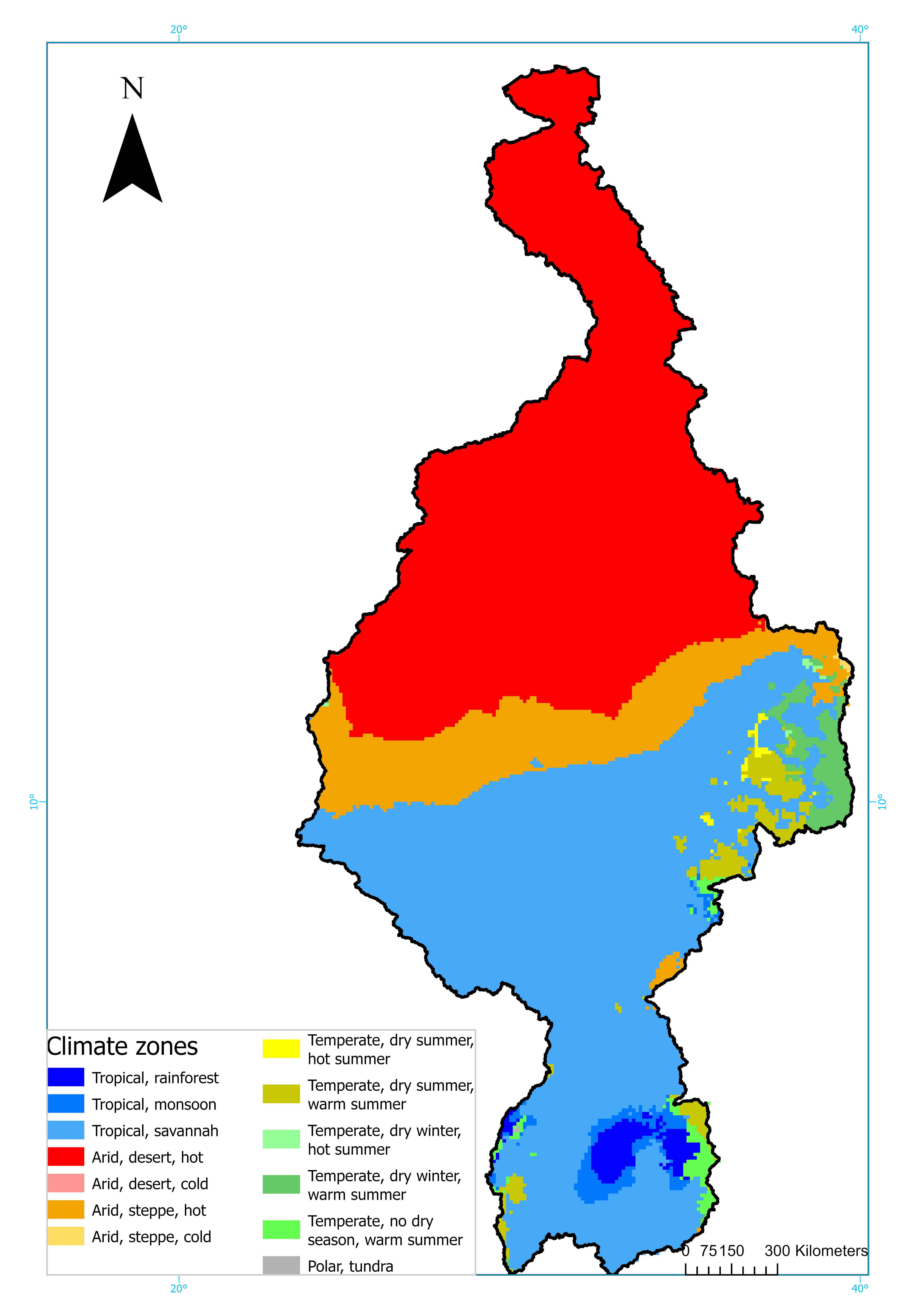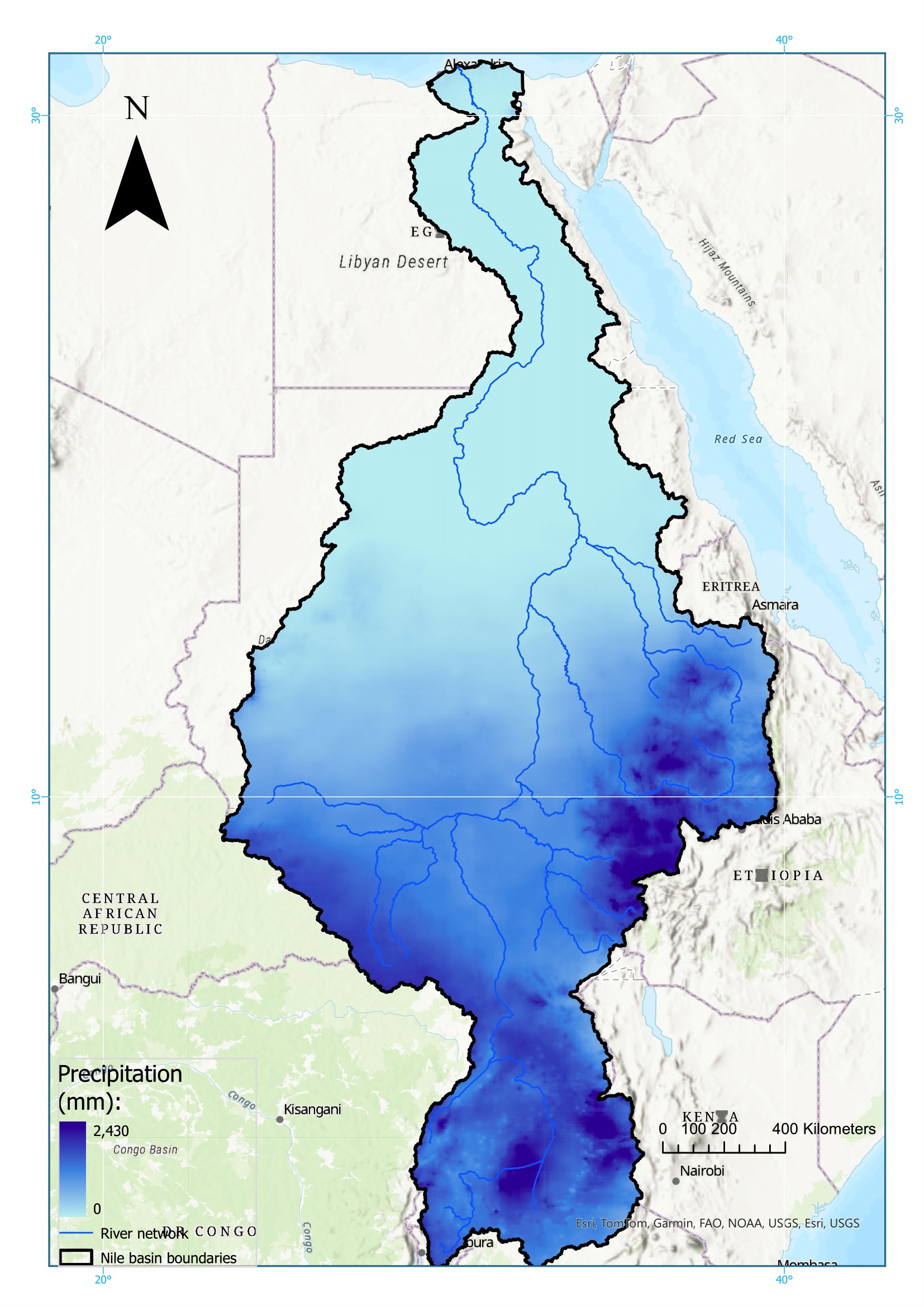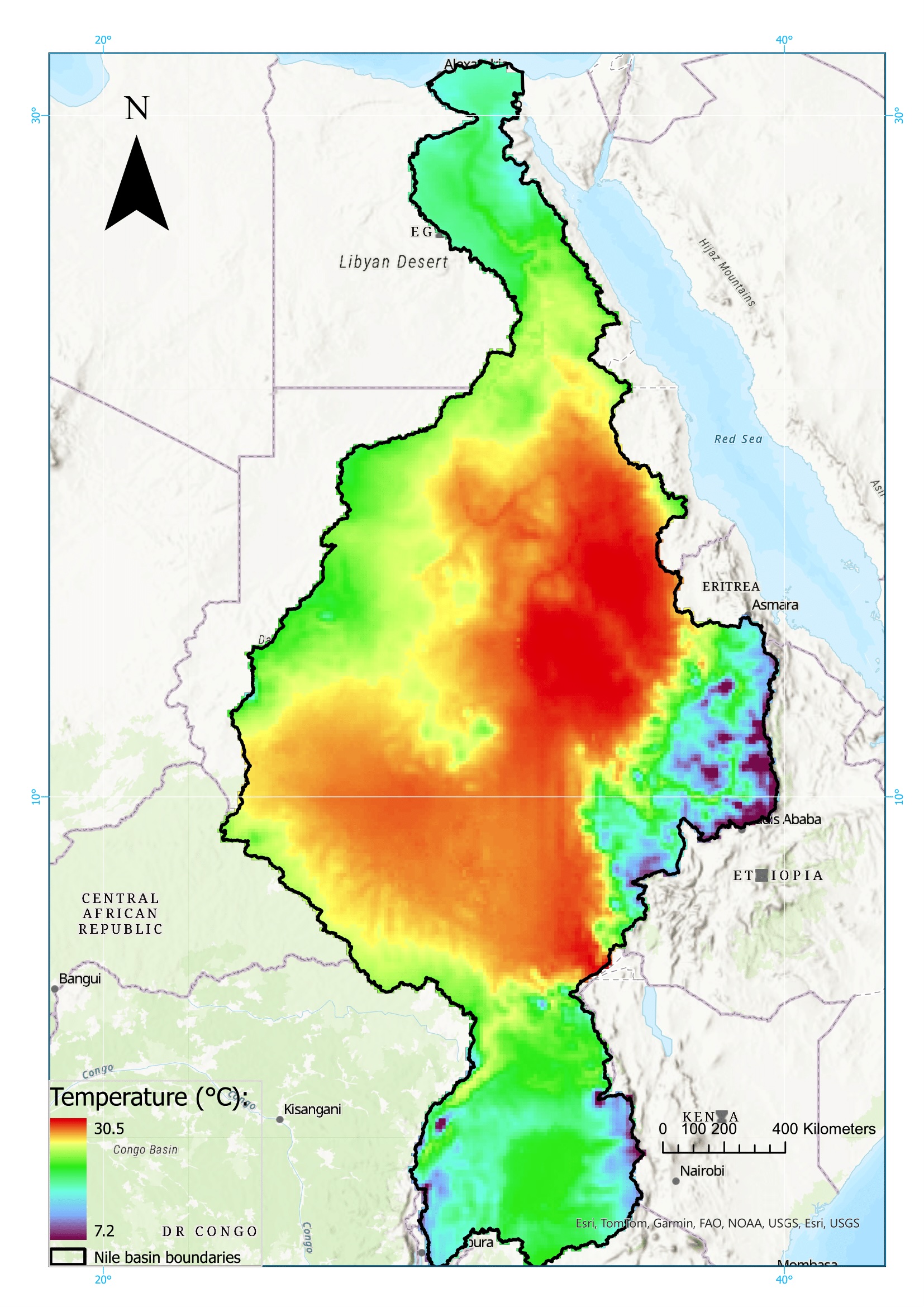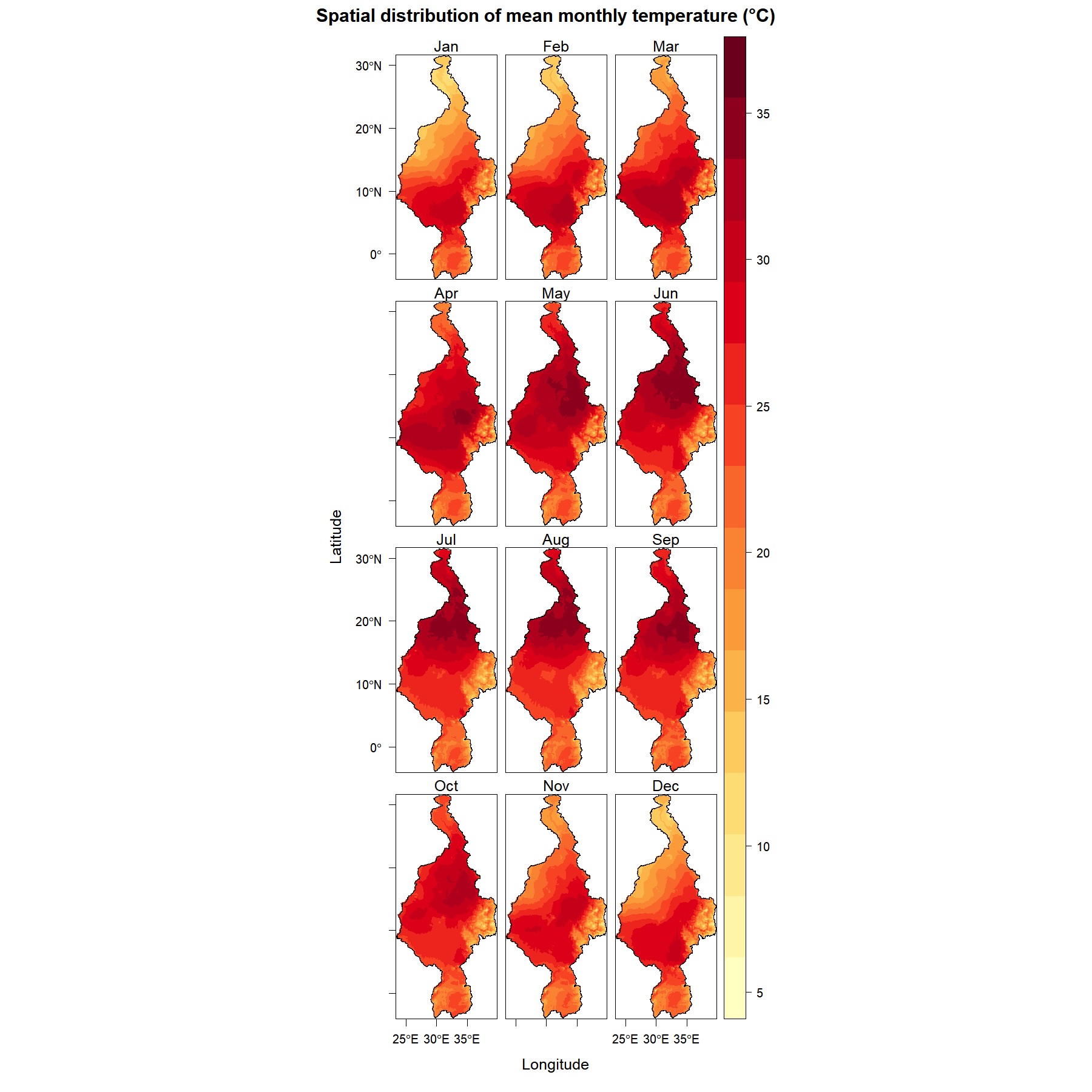NILE BASIN RESEARCH (N-AFRICA)
Climate
Climate classification
The Nile river basin encompasses a wide range of climate types due to the large geographical extent across the African continent. Using the Köppen- Geiger classification, the climate classes in the Nile river basin are categorized into five big categories: tropical, sub- tropical, arid, semi-arid, and Mediterranean (Figure 1). The equatorial lakes and parts of Ethiopia are dominated by tropical wet and dry climates, while in Sudan and Egypt sub-tropical dry arid (desert) is the main climate. Parts of the South of Sudan are characterized by sub-tropical dry semi-arid climate. In addition, around the lake Victoria and in parts of the Ethiopian highlands, the tropical wet and tropical monsoonal climate is found (NBI, 2016).

Precipitation
Precipitation patterns in the Nile Basin exhibits high spatial and temporal variations, where high rainfall rates exceeding a yearly average of 2,000 mm are found in the Equatorial lakes region and the Ethiopian highlands, while in the arid regions, annual rainfall are below 50 mm. According to Ribbe & Ahmed (2006) and Camberlin (2009) 28% of the total basin’s area receives less than 100 mm annually, and 34% receives between 700 – 1,000 mm/year.
This spatial variability is caused by the inter-tropical convergence zone (ITCZ) that is the main driver of precipitation events in the equatorial lake region and the Ethiopian highlands and where the impacts almost disappears in the north of Sudan and Egypt (Mellander et al., 2013).
The wet season in both the Atbara and Blue Nile is between May and October, where most of the precipitation falls within this period, and almost no rainfall occurs outside of it (NBI, 2016).

Temperature
Similar to precipitation, the air temperature also exhibits large spatial and temporal variability. Using the monthly datasets of air temperature of the ERA5Land product (Muñoz-Sabater, 2019), mean monthly values are the lowest in the Ethiopian highlands and parts of the Equatorial Lake region.
The highest values are generally recorded in the southern parts of the Blue Nile, parts of White Nile and the Main Nile, and decreases near the Delta and Mediterranean see.

Temperature seasonality
The analysis of monthly temperature over the Nile basin reveals distinct spatial and temporal patterns that reflects the region’s complex geography and seasonal climate change dynamics. Temporally, by looking into Figure 4, we notice that starting January, the average air temperature for the whole Nile basin increases gradually, until it reaches the peak in May, slightly above 28°C. Afterwards, a graduate decline in temperature begins with a noticeable drop between June and July. However these temporal are not applied on the whole Nile basin, where we notice, based on Figure 5, than in the southern part, near the equator, the temperature is generally stable and warm around 20°C during the whole year. While the northern part has more pronounced seasonal variability, where the hot season is between May and September, reaching values above 35°C in some areas of Sudan and Egypt.
References:
Beck, H., McVicar, T., Vergopolan, N., A., B., Lutsko, N., Dufour, Z., . . . van Dijk, A. a. (2023). High-resolution (1 km) Köppen-Geiger maps for 1901–2099 based on constrained CMIP6 projections. Scientific data, 10(1), 724. doi:doi:10.1038/s41597-023–02549‑6
Funk, C., Peterson, P., Landsfeld, M., Pedreros, D., Verdin, J., & Shukla, S. G. (2015). The climate hazards infrared precipitation with stations—a new environmental record for monitoring extremes. Scientific data, 2(1), 1-21. doi:doi: 10.1038/sdata.2015.66
Mellander, P. E., Gebrehiwot, S. G., Gärdenäs, A. I., Bewket, W., & Bishop, K. (2013). Summer Rains and Dry Seasons in the Upper Blue Nile Basin: The Predictability of Half a Century of Past and Future Spatiotemporal Patterns. PloS one, 8(7), e68461. doi:https://doi.org/10.1371/journal.pone.0068461
Muñoz-NBI. (2016). Chapter 5- Nile Basin Climate. In N. B. (NBI), The Nile Basin Water Resources Atlas (pp. 95 - 132). Nile Basin Initiative (NBI)
, J. (2019). ERA5-Land monthly averaged data from 1981 to present, Copernicus Climate Change Service (C3S) Climate Data Store (CDS). doi:https://doi.org/10.24381/cds.68d2bb30
Ribbe, L., & Ahmed, S. (2006). Transboundary Water Management in the Nile River Basin. Technology Resource Management and Development 4, 13-27.

